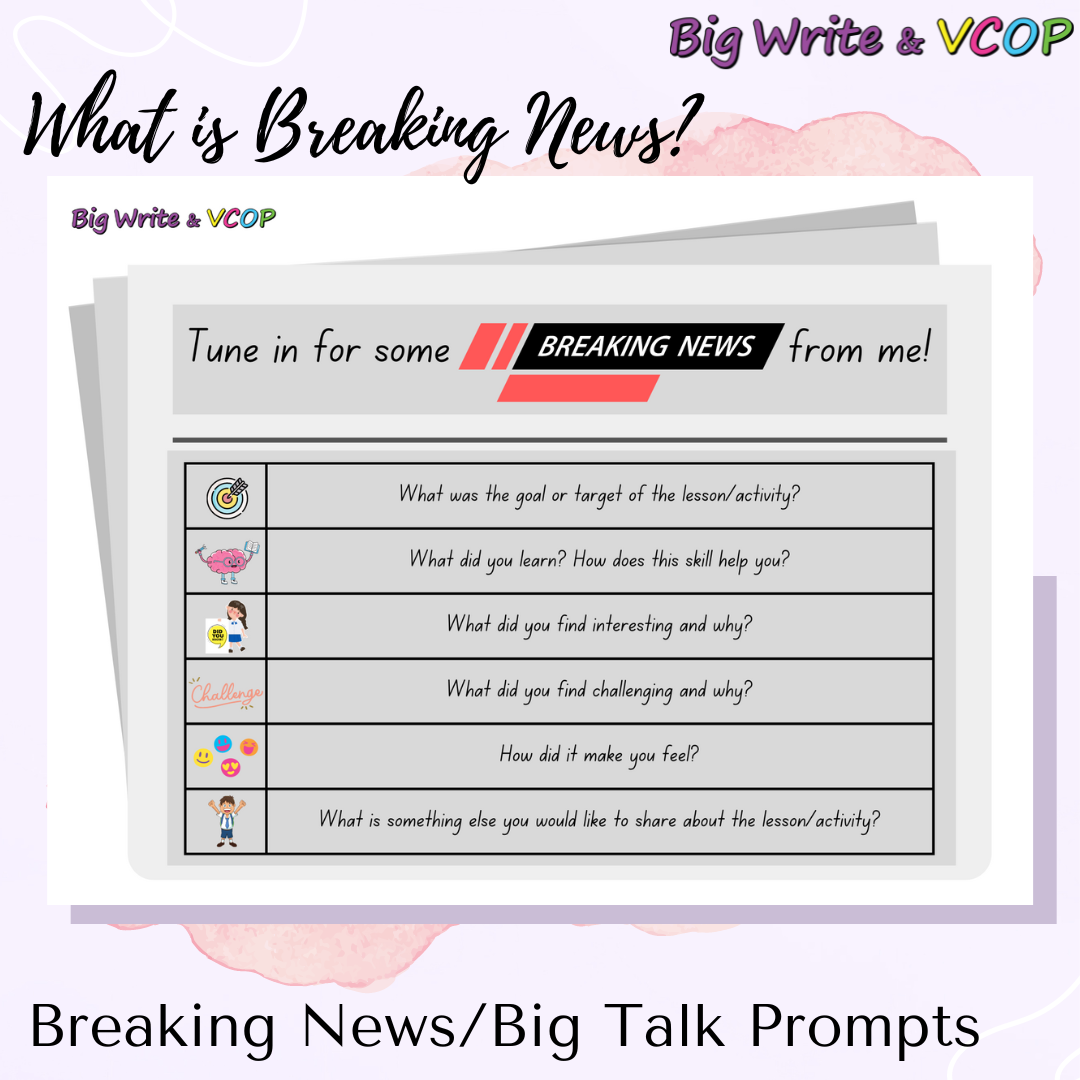Breaking News
You might have already heard of Big Talk, but have you heard of Breaking News?
Big Talk is the prequel to Big Write and is towards the end of the week to celebrate and showcase weekly goals as well as connections outside the classroom through Home Talk. In the Foundation classroom, it usually happens on Friday.
Breaking News (daily Big Talk) can happen multiple times a day as a reflection of learning or end of the day summary. These talks don’t need any Home Talk assistance, but you should still try and schedule them so you don’t forget and drop them.
A third option is replacing the Show and Tell concept with the Big Talk format. It’s still personal sharing of experiences and I usually have 1 share with the class to practise presenting to a group and then we pair up. This speeds up Show and Tell and those that don’t have anything to say from home share a recess/lunchtime experience. As you might like involvement from carers, this might fall under Big Talk.
With the decline in oral language and the word gap getting bigger and bigger in both Primary and Secondary school, we need to schedule more talk time in the classroom.
But I don’t have time you say?
- It’s so important, that you’ll need to make time.
You might already be doing parts of it that just need tweaking. - It will only take about 5-7mins extra per Breaking News and the difference it will make will blow your mind!
Big Talk and Breaking News should be completed in pairs or threes. The speaker stands to talk, while the audience sits to listen. This promotes a presentation voice (more formal language), not a conversation voice. The talk should only go for about 30-seconds to 2 minutes.
Remember: A 30-sec talk would equate to about half a page of junior writing or about 50 words! So, let’s work on quality and stick to 30secs for a while, we don’t want waffle.
Start by modelling and suggesting questions to answer during the talk session, but should ensure students don’t answer with a fragment of a sentence instead of complete sentences. Example: How did it make you feel? Pretty good. (Pretty good is a fragment and missing the information for the audience. Instead, we need; I thought the activity was pretty good.)
You’ll also need to encourage students to continue talking without prompting with a verbal question. This is where the Breaking News resource prompt can come in. Teach the students the questions linked to the visual icon. That way they can just glance at the visual icons to get more ideas of what to add to their talk. Not all prompt questions can be used in every talk, so discuss first as a group and children should be encouraged to skip if the response is ‘I don’t know’ or ‘nothing’.
Ready to talk?
Person A stands and is the Reporter first, person B sits attentively in front as the Journalist.
Set a 30-sec sand timer (YouTube one here https://www.youtube.com/watch?v=VwP0TRWhjdY)
Let students know when they have 5 secs to go to finish their reflection.
Journalists’ comments on something positive that the Reporter said or how they said it (optional but leads to Breakdown Buddies).
Swap and restart the timer.
Adding Breaking News at the end of a lesson will help clarify understanding and embed the learning. It will show you who understood the lesson, and who needs more support so use this time to roam and listen to the presentations.
Completing an end of the day Breaking News is a great way to reflect on what they did during the day. Use your timetables to help students. This will be extremely beneficial in helping carers obtain more information when they ask ‘How was your day?’.
